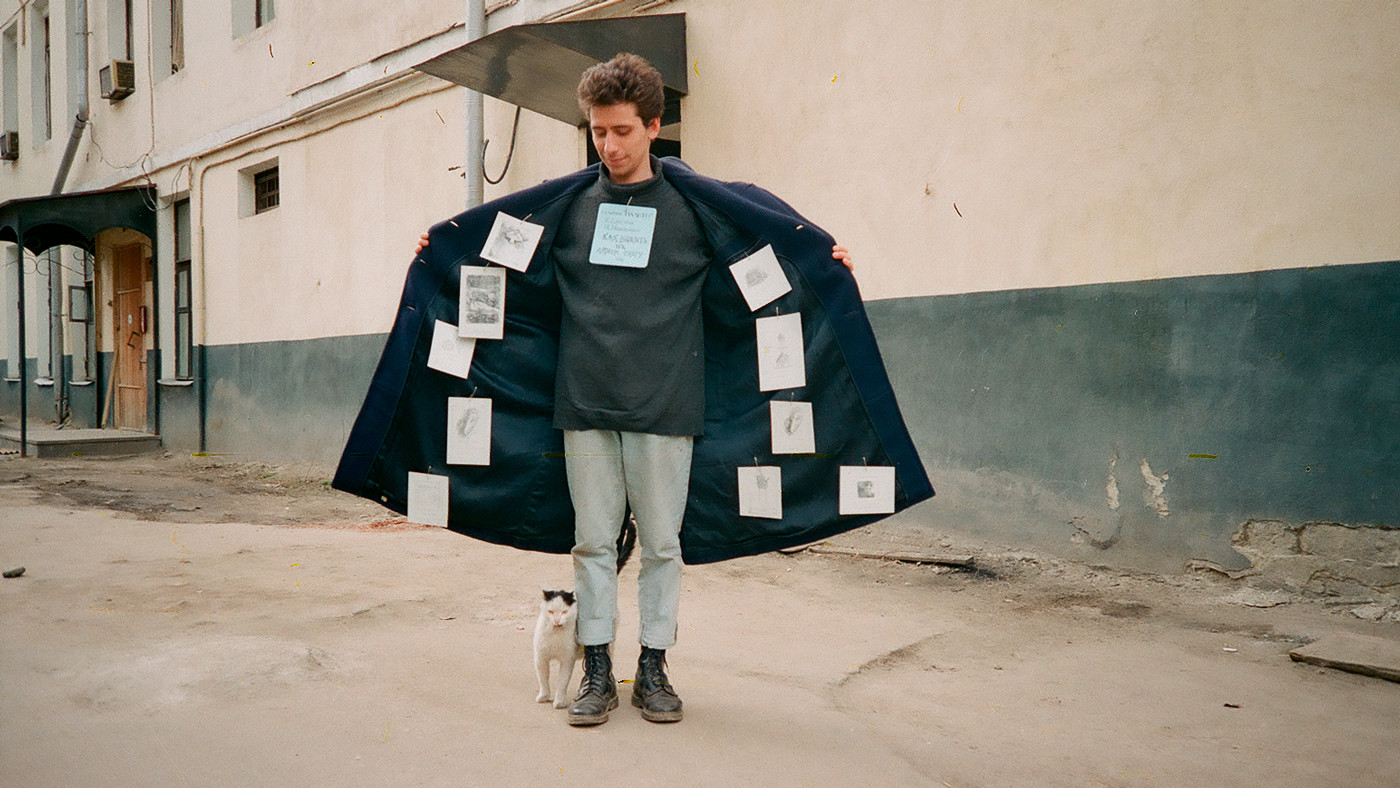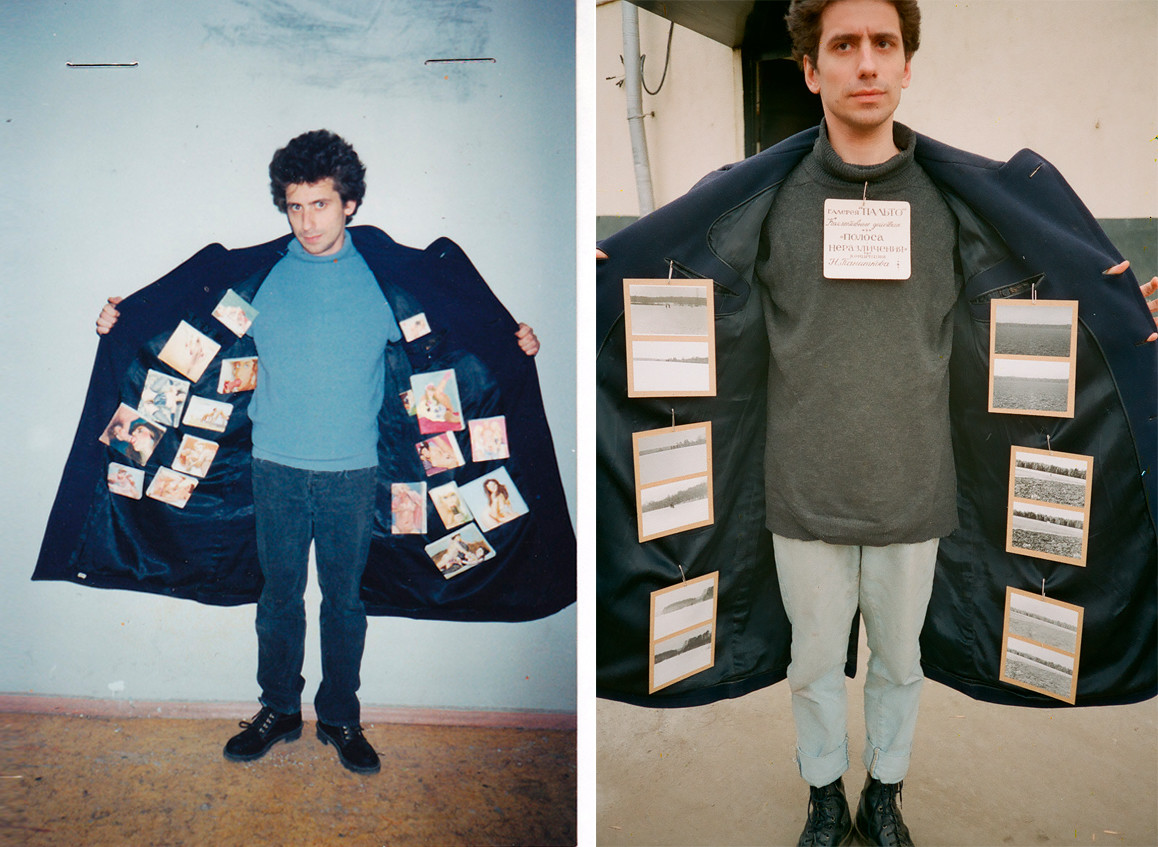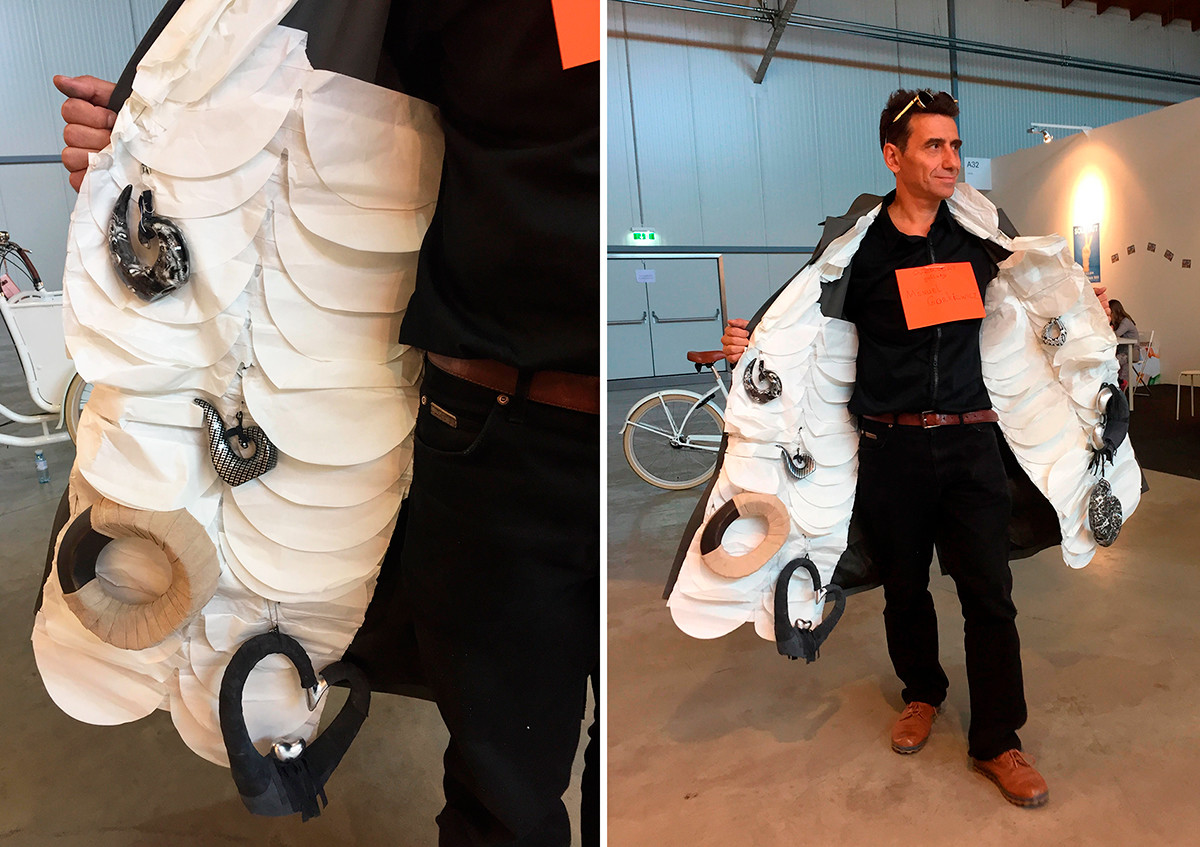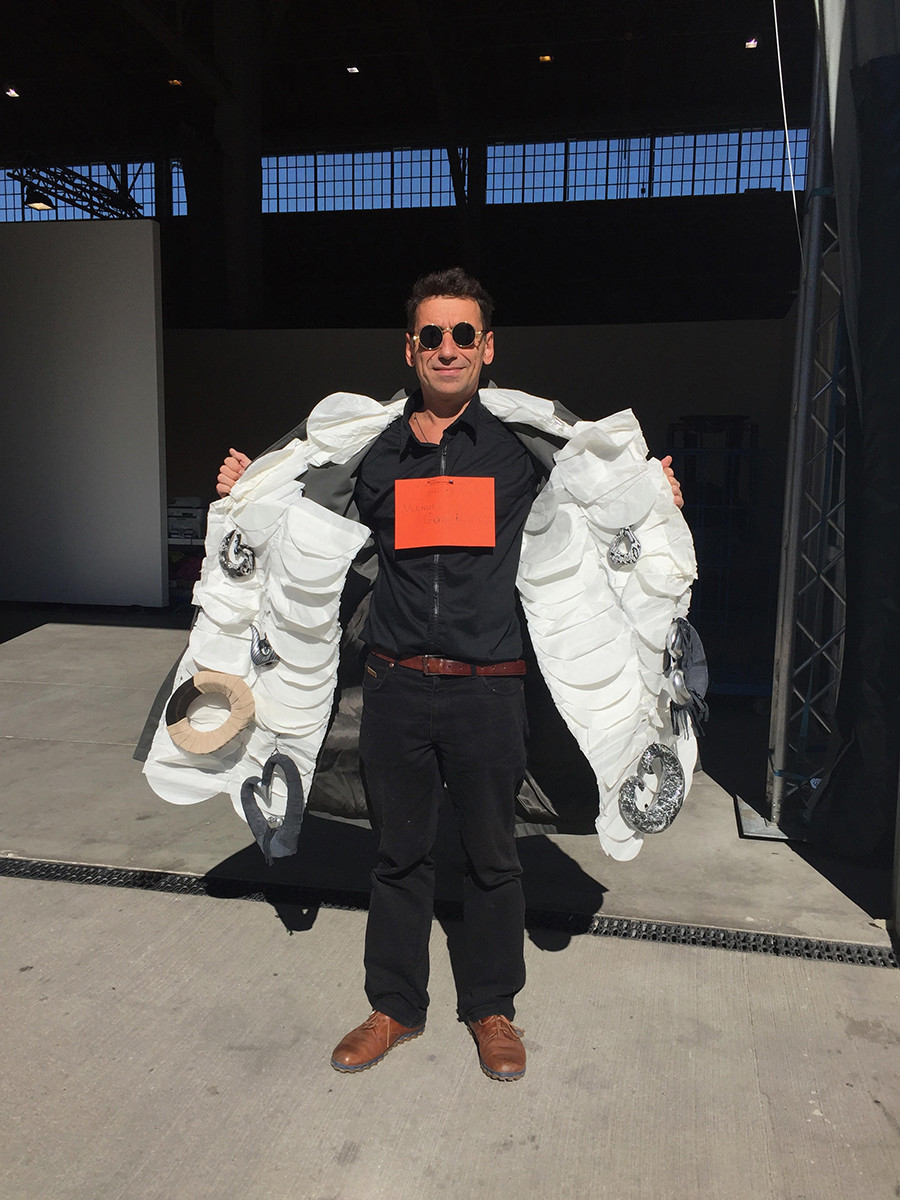Overcoat man, or how one artist became a successful art dealer without a gallery

At exhibition openings in Moscow and St. Petersburg you will often see a man who wears a coat all year round. Making the motion of an exhibitionist exposing himself, he opens wide the flaps of his coat to reveal…art. The lining of his coat is always covered with small paintings or drawings, just like the walls of a museum. This is the itinerant
Success in three minutes
The gallery consists of just one man, the fun-loving artist Alexander Petrelli. Originally from Odessa, he moved to Moscow in the 1990s. Around this time people started calling him by the nickname “Karman” (“Pocket”), which has stuck ever since become like a second name. He shows up in his coat at major museums, including the Pushkin Museum of Fine Arts and the Tretyakov Gallery, as well as exhibition openings at gallery spaces.

Left to right: Dubos Vinogradov, 1995, K.D.N.Panitkov, 1996.
Press photoKarman's itinerant gallery, which started as an ironic performance, is one of the longest lasting exhibition spaces on the Russian contemporary art market. Only a handful of galleries in Moscow, fewer than the fingers of one hand, have survived from the mid-1990s to the present day, and

"The only artist whose works I sold in Vienna, not to a Russian collector but to a chance client who didn't have the slightest idea about Russian art, was Aidan Salakhova," Petrelli told Russia Beyond. "It was a work of graphic art on tracing paper with two sheets superimposed, and the image changed depending on which side you were looking at. I just put them on and came out—and there he was, sitting on a small sofa in front of me. An Austrian, with a very genteel manner and a cane. As soon as he saw the works, he grabbed them! He didn't even ask who the artist was."
In Vienna, Karman also sold works by the famous Austrian art group Gelitin. At 30 x 40 cm, their pictures are quite large by the gallery’s standards. He says only two of them sold, but for an
An exhibition on the move
The story of

This is how the idea of an itinerant museum, first put forward by Marcel Duchamp, came into existence. Vladimir Dubossarsky and Alexander Vinogradov, two important figures in today’s contemporary art scene and at whose exhibition the gallery opened, were very excited about the idea (they were not yet famous then). At the time, the Petrelli Coat made an appearance at an exhibition that had opened in the luxurious—and now long-since defunct—Manhattan Express club. The main exhibition was called Art Against Sex, while

"Today we can be honest,” Petrelli says. “At the time, the concept didn't work. No one bought anything. But later, the whole exhibition—the first solo one for the Dubossarsky-Vinogradov duo — was sold by its authors for 30,000 euros!"
If using any of Russia Beyond's content, partly or in full, always provide an active hyperlink to the original material.
Subscribe
to our newsletter!
Get the week's best stories straight to your inbox